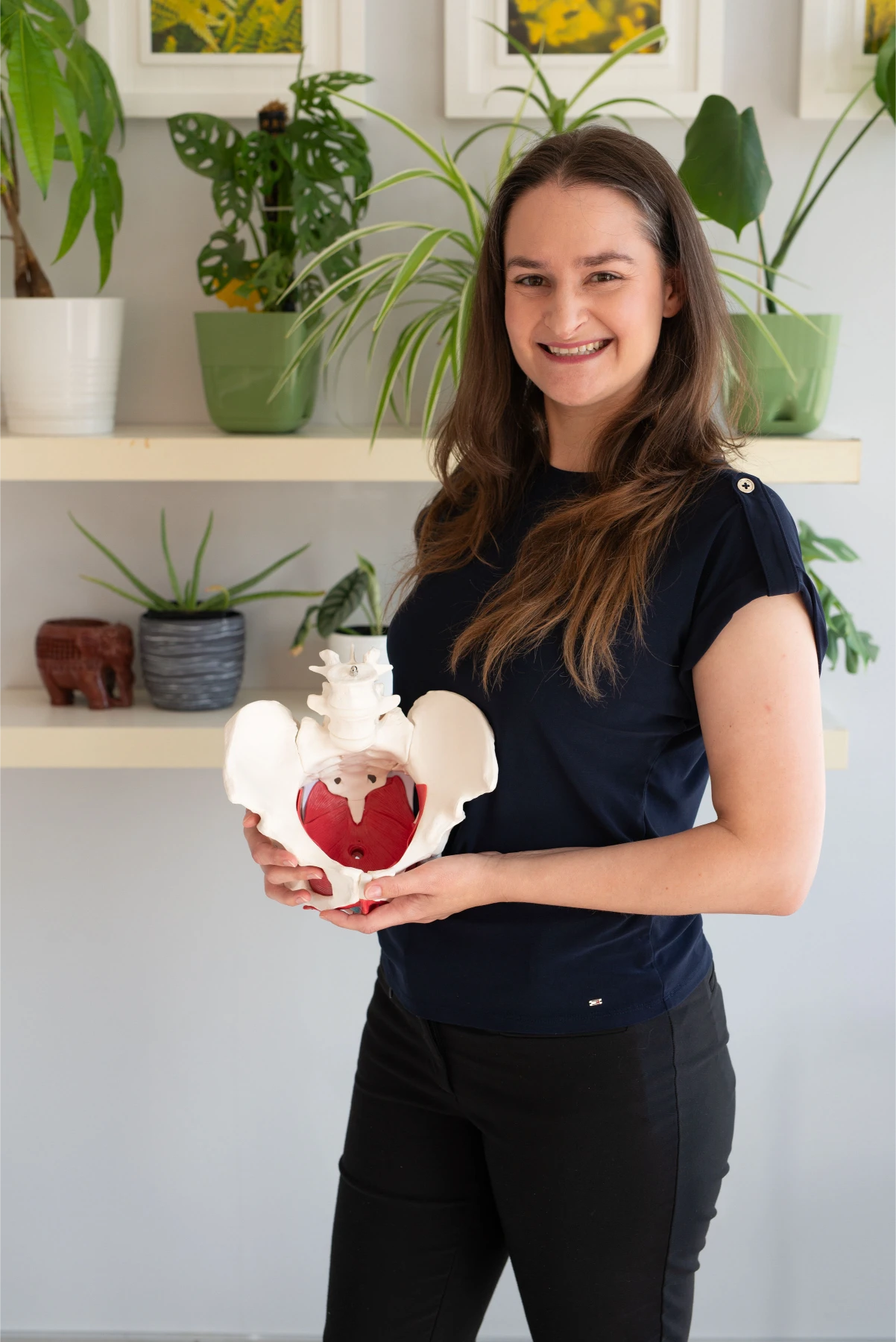
Pelvic Health Physiotherapy offers numerous benefits, including:
Pre and postnatal physiotherapy is a specialized service for women experiencing difficulties during pregnancy or postpartum. This includes managing back, hip, and pelvic pain during pregnancy and addressing post-delivery issues.
Our Pelvic Health Physiotherapy addresses a wide range of conditions, including:
Vulvodynia: Chronic pain or discomfort around the opening of the vagina (vulva) with no identifiable cause, often described as burning, stinging, or irritation.
Vestibulodynia: A subtype of vulvodynia characterized by pain localized to the vestibule (entrance) of the vagina, often triggered by touch or pressure.
Dysmenorrhea: Painful menstrual cramps that occur just before or during menstruation, caused by uterine contractions.
Diastasis Recti: Separation of the abdominal muscles along the midline, commonly occurring during or after pregnancy, leading to a bulge in the middle of the abdomen.
Detrusor Overactivity: A condition where the bladder muscle (detrusor) contracts too often or uncontrollably, causing frequent urination and urgency.
Ureterocele: A swelling at the lower end of the ureter, where it enters the bladder, which can block urine flow and lead to urinary tract infections.
Rectocele: A condition where the rectum bulges into the back wall of the vagina due to weakening of the vaginal supporting tissues.
Enterocele: A herniation of the small intestine through the pelvic floor, often into the vaginal canal, caused by weakening of the pelvic support structures.
Pudendal Neuralgia: Chronic pain in the distribution of the pudendal nerve, affecting the genital, anal, and perineal areas, often described as burning, shooting, or aching.
Coccydynia: Pain in the coccyx (tailbone) area, often resulting from trauma, prolonged sitting, or childbirth, and can be sharp or aching.
Pelvic Girdle Pain: Pain experienced in the pelvic region, often during pregnancy, affecting the joints and ligaments of the pelvis.
Overactive Bladder: A condition characterized by sudden, involuntary contractions of the bladder muscle, causing frequent and urgent need to urinate.
Symphysis Pubis Dysfunction: Pain and instability in the pelvic joint at the front (symphysis pubis), often occurring during pregnancy due to hormonal changes and increased joint mobility.
Our Pelvic Floor Physiotherapist will work closely with you to develop a personalized treatment plan tailored to your specific needs. This may include a combination of manual therapy, exercises, and education to ensure you receive the most effective care.
If you are experiencing pelvic health issues or need support during or after pregnancy, contact Physio IT today to book an appointment with our Pelvic Floor Physiotherapist. Let us help you achieve optimal pelvic health and overall well-being.

What to expect at your pelvic floor physiotherapy appointment
We know that coming in for a pelvic health assessment may be scary and you probably have some questions as often pelvic floor concerns are not as widely spoken as common issues such as lower back pain, and we might be the first pelvic floor physiotherapist that you might be seeing. We want you to feel as comfortable as possible during your time with us.
Here is a breakdown of what to expect at your first appointment.
As you book your initial assessment, you will receive an online form, this is the symptom monitor, that includes a wide list of questions to track any symptoms that might be related to your pelvic concern, this questionnaire will help your Pelvic Floor Physiotherapist to better understand your symptoms and guide your initial visit.
During your visit, we will listen to you without judgment, asking you questions that will be relevant to your pelvic health, and trust us, we have heard it all before!
From your history and symptoms, we create a plan specific to you that might include different assessments, starting with an external assessment to know if any other structures such as ribs, back and hips could be contributing to your symptoms
We will explain what we are doing and more importantly why we are doing it along the way. If an internal exam is appropriate, we will go over the details of it and explore any questions or concerns that you might have, if you do not feel comfortable, we will discuss alternatives.
During the internal exam we will closely communicate with you regarding your comfort level and get your consent for each step, starting with the examination of the vulvar area addressing any areas of tension before, following to an internal veginal and/or rectal exam assessing muscular tension, strength and coordination.
Following the external and/or internal exam we will go over our findings, we will educate you about your condition, we will provide our specific recommendations, and together we will come up with a plan to achieve your goals.
If you have any further questions about what to expect, please feel free to contact our pelvic health physiotherapist below.
Sign up to receive updates, promotions, and sneak peaks of upcoming products. Plus 20% off your next order.